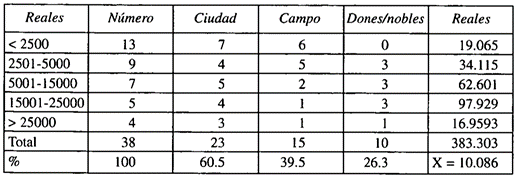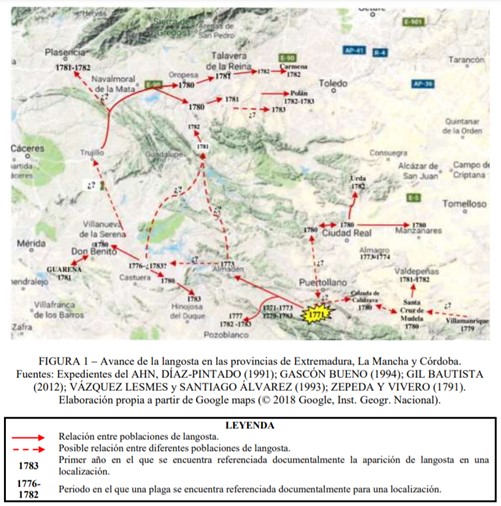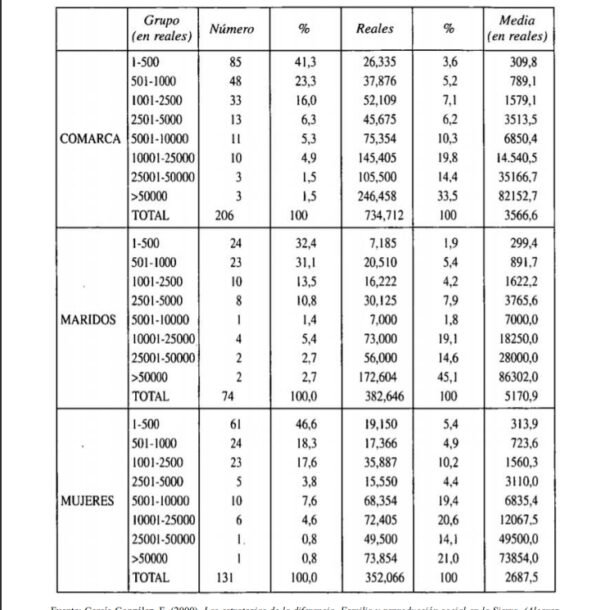
Within the studies on the family, the analysis based on sex reveals the different characteristics of the household: productive, welfare or ostentatious. The professions set the trends: while among labourers and day labourers the proportion of male relatives living in the household was around 40-45%, merchants, waiters and the liberal professions had the fewest, with 28.6%, 20% and 33.3% respectively. Between 1753 and 1787, the parameters were reversed, with the domestic aggregate among the clergy (from 35.3% to 80.8%), waiters (from 20% to 63.8%) and merchants (28.6% to 65.4%) standing out. In general terms, the presence of men in the household increased by 29.5%, while the number of women fell from 192 (59.6%) to 125 (31.4%). Finally, it is worth noting the importance of servants in the household. By sex, these were determined according to the professions of their employers; in 1753, while among the farm labourers almost 95% of the servants were men, among the members of the liberal professions, women accounted for 40%, a figure which increased over time.
Collection: Statistics
Project: 3. Rural world and urban world in the formation of the European identity., 4. Family, daily life and social inequality in Europe.
Chronology: XVIII
Scope: Secondary Education, Baccalaureate, University
Resource type: Statistics
Format: Table
Source: García González, F. (2000). Las estrategias de la diferencia. Familia y reproducción social en la Sierra. (Alcaraz, siglo XVIII). Madrid: Ministerio de Agricultura, Pesca y Alimentación, p. 129.
Language: Spanish
Date: 2000
Owner: Pablo Ballesta Fernández (Modernalia)
Copyright: ©Ministerio de Agricultura, Pesca y Alimentación ©Francisco García González ©Seminario de Historia Social de la Población
Abstract: Household structure linked to the domestic aggregates according to the professions carried out by the heads of household. Process of inversion in the structures throughout the 18th century.
Tags








